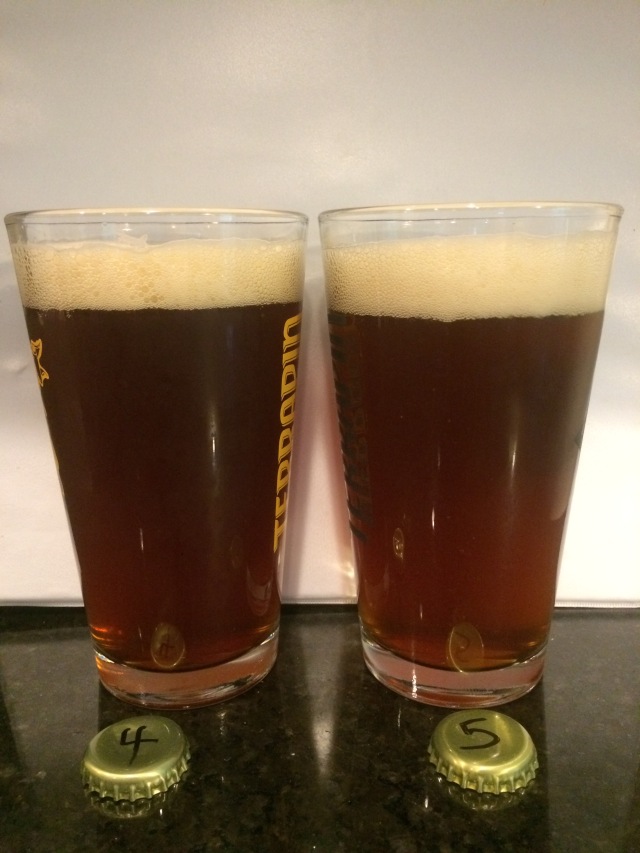This post is one in a series of making small adjustments to a single recipe in order to improve it, learn more about the impact each ingredient has on the finished product, and the art of recipe creation. The rest of the comparison tastings in this series can be found here.
Comparing a beer I’ve already declared to be the malt profile winner to a beer I knew wasn’t what I was trying to achieve is a tricky thing. Preconceived notions are hard to set aside, but doing so allowed me to be pleasantly surprised by how good Iteration 4 was, even though it didn’t meet my expectations or standards of what this red IPA should be.
Recap
The differences between versions 4 and 5 of this recipe were as follows:
- Iteration 5 had 0.75 lbs. more malt total than Iteration 4.
- Iteration 4 used 1 lb. of Dark Munich and Iteration 5 used 1 lb. of Vienna
- Iteration 4 had 0.25 lbs. more Crystal 120 than Iteration 5.
- Iteration 5 was 0.8% higher in alcohol than Iteration 4 due to a 4-point difference in OG (1.056 and 1.052, respectively) and a 2-point difference in FG (1.008 and 1.010, respectively).
Appearance
Iterations 4 and 5 both poured with good head. Iteration 4 exhibited only moderate retention, but showed a respectable amount of lacing. Iteration 5 maintained excellent retention, but did not provide any lacing.
The color of Iteration 4 was dark copper/deep amber, whereas Iteration 5 was copper/amber.

Aroma
The aroma of Iteration 4 had citrus and floral notes while having a strong bread character. Iteration 5 had a stronger hop character with the citrus notes being much stronger. No floral notes came through, even though these beers had the same hopping schedule. While the malt notes of Iteration 4 were bready, the malt character of Iteration 5 had a cherry and plum nose to it.
Flavor
Iteration 4 tasted strongly of bread. There were floral notes amongst this with a citrus finish, but the breadiness was the dominant character.
Iteration 5, in the order of noticing these flavors, tasted of citrus and plum. This beer also had a bitter finish, which was pleasant.
Final Thoughts
Neither of these beers are quite the red hue that I really want. I’m hoping that, although I have landed on Iteration 5’s malt bill as my final profile, adding a couple ounces more of C120 will boost the color without adding a roasted character.
Overall, both were good beers, but Iteration 4 is not the end result I want for this recipe. The Munich flavor was too strong and overpowered the character I otherwise get from the C120. It was also a sweeter beer. Iteration 5 was a better balance of hop and malt flavor. Whatever is happening in this beer to bring a more citrus aroma and leave behind the floral notes is working in favor of an aroma that is more complimentary to the malt. This beer has the dark fruit flavor I want while also being an appropriate balance between the bitterness and the malt sweetness. While it could use more hop character, the level of bitterness is sufficient to balance the malt backbone and not overpower the malt complexity a red IPA deserves.
